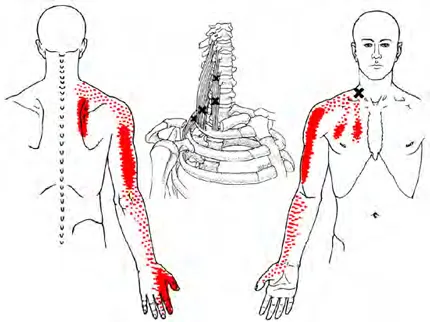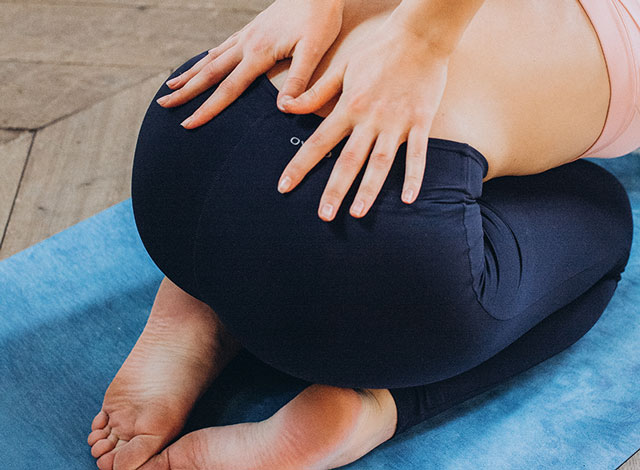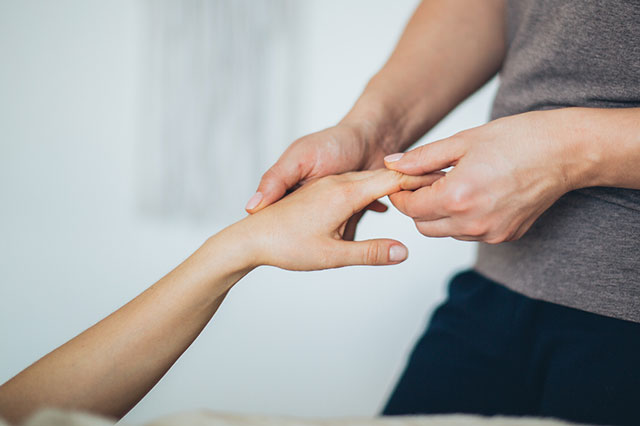Clinical Massage...
for the relief of chronic pain
The Clinical Massage method I use...
- follows the award-winning Jing Method™ for the treatment of chronic musculoskeletal pain
- blends the best of eastern and western advanced bodywork techniques including trigger points, fascial work, acupressure and stretching.
- accompanies you with warmth and compassion on your journey out of pain
- expects to see measurable results in usually one to six treatments
Most if not all of us experience chronic pain in our bodies at some point during our lives – an aching shoulder or back which may come and go, or we may have extended periods of pain as we deal with more longer-term conditions. When we decide we will not or cannot ignore the problem any longer, we normally go to the GP or we may seek out a physio. However, people are becoming more aware of the results of clinical massage therapists to address issues of chronic pain.
Clinical massage therapists focus on soft tissue. They work in large part – but not exclusively – with the muscles and the fascia (that web of interconnective tissue that runs like a spiderman suit through the whole of our body). Muscles develop knots and adhesions, and fascia restrictions, which can all become the loci of pain. So much of the chronic pain we feel is manifested in the soft tissue of our bodies, even if the soft tissues themselves are not the direct cause of the problem, which is why clinical massage is so effective as a treatment. For example, a herniated or ‘slipped’ disc might leave you with ongoing pain long after the herniation has healed itself; this pain does not come from the disc or associated nerves, but from muscles that surround the area. Or in the case of arthritis, the pain felt often does not come from the arthritic joint but from all soft tissue surrounding the joint.
Clinical massage therapists have spent a lot of time studying how and where pain manifests in the body, and importantly where to target massage treatment and the cause of the pain. This is not always where the pain is felt. They study pain referral maps developed over years of therapeutic practice in the industry which show where pain is felt and where the cause is located. For example, they know to treat the muscles in the neck when pain is experienced in the wrist, or to work on the glutes when the pain is felt in the knee.

Although they are not doctors so cannot diagnose problems, they have a good knowledge of pathology and the conditions which cause pain and know which massage protocols may help alleviate it. They also know which protocols to use for the effective treatment of a range of systemic conditions which affect the body. As well as ‘muscle work’ clinical massage also involves the use of heat (massaging with hot stones), stretching and acupressure points which have all been shown to help in the treatment of conditions like fibromyalgia, for example. The likelihood is that whatever your manifestation of chronic pain, there is an aspect of the clinical massage protocol that is suitable for you.
Clinical massage is firmly rooted in the biopsychosocial paradigm of pain management. This may be a new word for many, but you will see it more and more, from GP surgeries to the hospital to the workplace. It means that pain and our response to pain is as much affected by psychological and social factors as well as the obvious biological ones. If you are angry, anxious, frustrated and depressed your experience of pain will be heightened. If you are poor or disadvantaged you will experience more chronic pain than if you are otherwise. This seems to correlate with the increasingly well-known belief that the situations surrounding your life, and the stress and trauma they produce, have a direct effect on your health. These manifest physically in the body and can be addressed and relieved through massage. In a clinical massage treatment, ‘what is going on in your life’ is of direct interest to the therapist, as this will effect the treatment you receive on the massage couch and also the recommendations for self-care that you are given.
Although clinical massage is targeted and effective – and, so, ‘clinical’ – yet it never loses the feel of a holistic, nurturing massage treatment. Just like a deep tissue treatment, you might ‘feel it’ during the massage, but you still come out more relaxed and feeling as though you have really taken time for yourself and stepped away from the world for a while. This is as important in treating chronic pain as the physical work itself.
Experiencing pain caused by one of these conditions? Clinical massage can help...

lower back pain
Lordosis, kyphosis, scoliosis, herniated disc, SIJ dysfunction, spondylosis, piriformis syndrome (presenting as sciatica), as well as sprains and strains...

neck and shoulder pain
'wrenched neck', stiff neck, whiplash, torticollis, thoracic outlet and pec minor syndrome, herniated disc, headaches and migraines, arm/hand numbess/tingling, TMJ dysfunction.

shoulder girdle pain
supraspinatus tendinopathy and other rotator cuff injury, frozen shoulder, pec minor syndrome, shoulder instability/separation/impingement, bicipital tendinosis

forearm, wrist and hand pain
carpal tunnel syndrome, tennis elbow, golfer's elbow, baker's elbow, texter's thumb, RSI, osteoarthritis, rheumatoid arthritis, Depuytren's contracture

hip and pelvis pain
groin strain, sciatica, iliolumbar ligament sprain, trochanteric bursitis, SIJ dysfunction, osteoarthritis

leg, knee and foot pain
runner's knee, jumper's knee, housemaid's knee, patellofemoral pain syndrome, cruciate and collateral ligaments sprains, Osgood-Schlatter's disease, shin splints, ankle sprain, Achilles tendon injuries, plantar fasciitis

